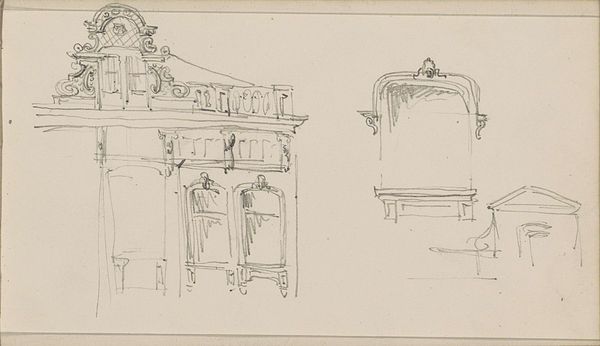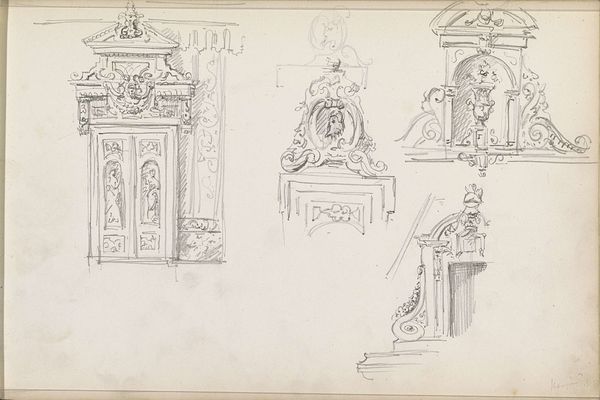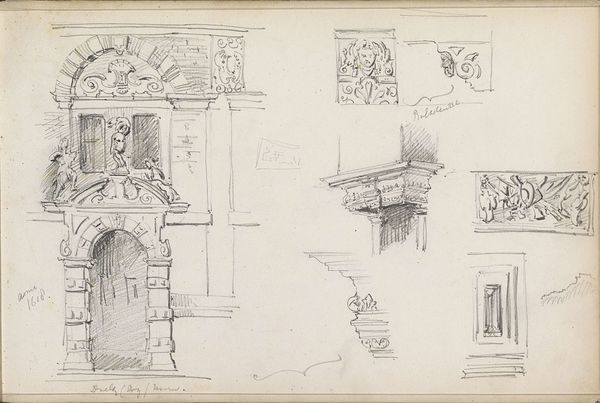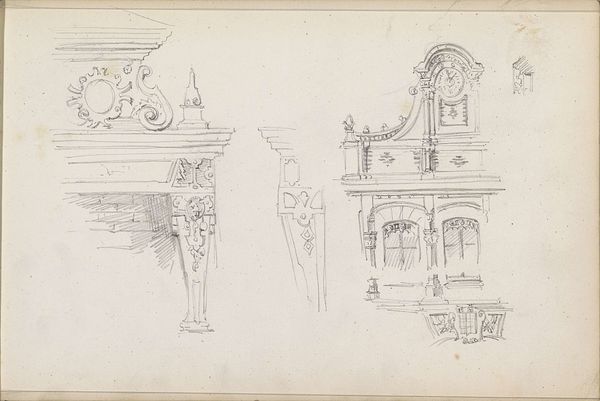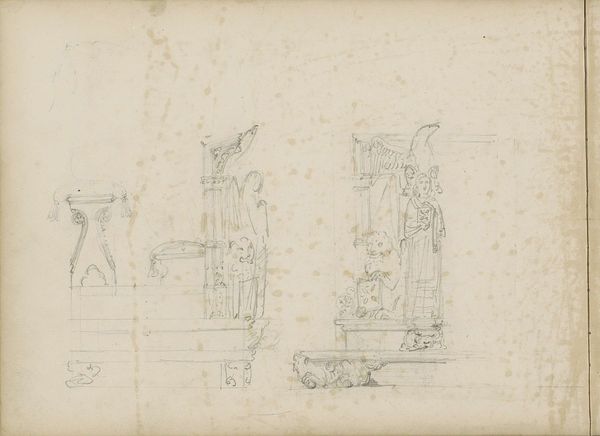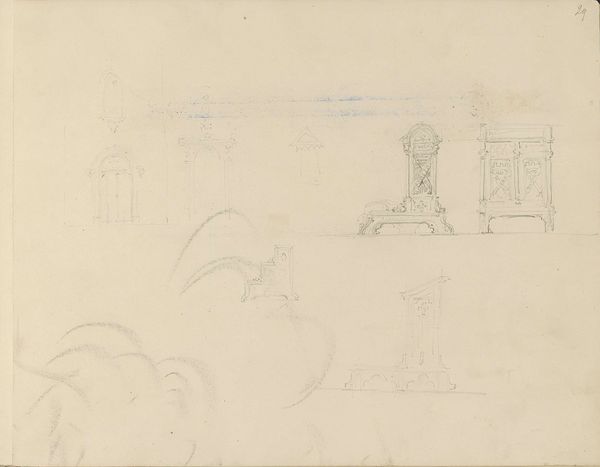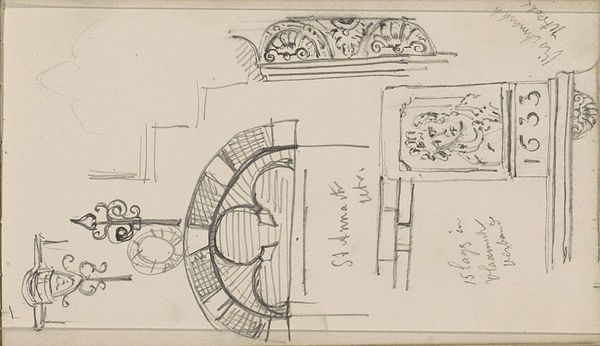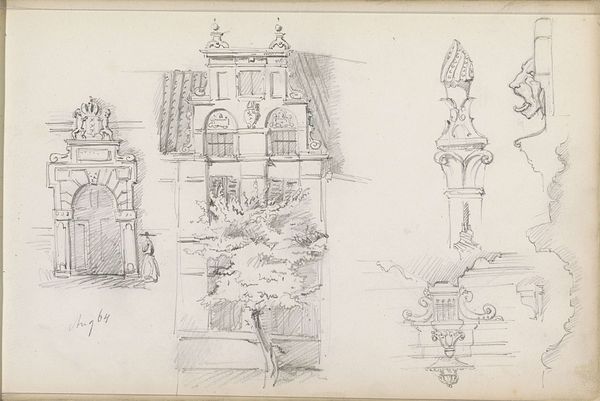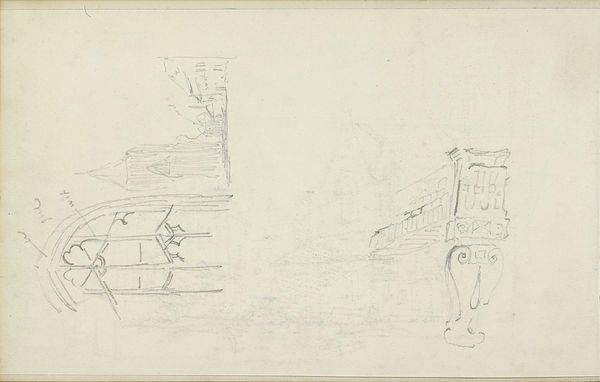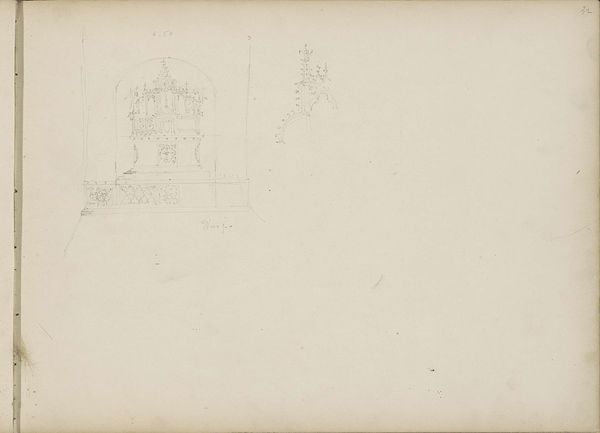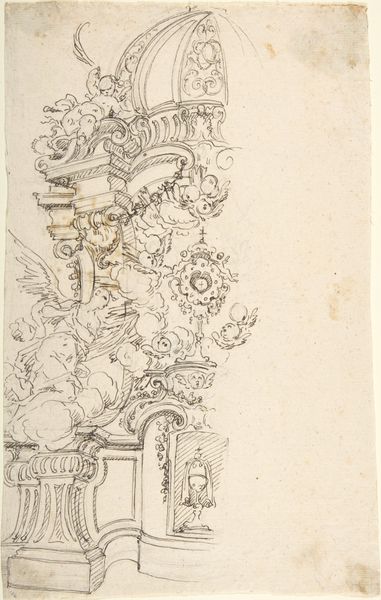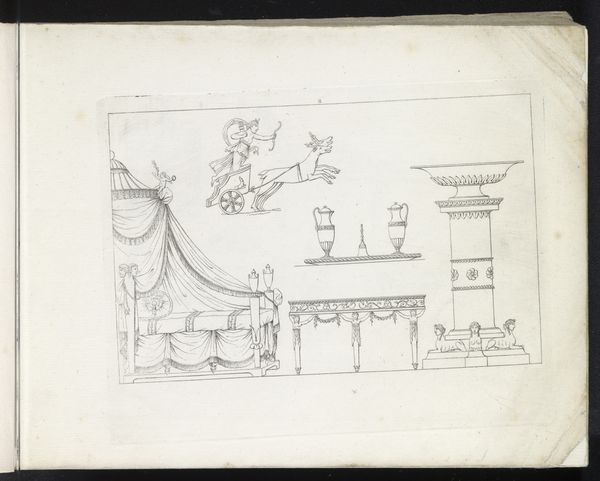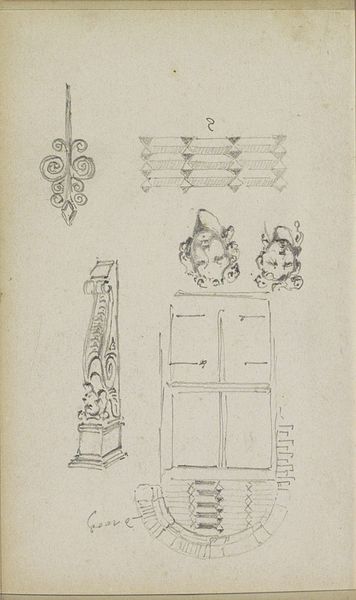
drawing, pencil, graphite, architecture
#
drawing
#
geometric
#
pencil
#
graphite
#
cityscape
#
architecture
Copyright: Rijks Museum: Open Domain
Curator: This is Isaac Gosschalk’s graphite and pencil drawing, "Fronton van een gebouw te Hannover," created between 1866 and 1868. Editor: It has a tentative, almost ghostly quality. The sketch-like nature makes me think of lost histories and architectures. Curator: Note the careful rendering of architectural details—the lines are economical yet precise. Look at the geometric solidity achieved with just graphite on paper. Editor: But beyond that, I see a potent reminder of societal upheavals during that period, right after the Austro-Prussian war when the Kingdom of Hanover was annexed by Prussia. It's a fleeting capture of something about to be erased. Is this drawing meant to serve some act of remembrance, resistance? Curator: Perhaps. But what commands attention is Gosschalk’s ability to suggest depth and volume. The shading and subtle gradations bring out the baroque intricacies of the building’s fronton, a hallmark of classical architecture reinterpreted in 19th-century civic design. Editor: I'm drawn to the multiple views presented here – not just one facade but fragments, alternatives. This speaks to the subjective act of observing, almost challenging a singular, dominant narrative. It invites multiple readings of a place marked by conflict and transition. Curator: Undoubtedly. Though what also fascinates me is its status as a study, a prelude to a potential building or simply an exercise in form and perspective. The material itself prompts such observations – think of the grain of the paper, the specific hardness of the graphite pencil... Editor: All the same, I'm hard-pressed not to read the cityscape, sketched with such vulnerable strokes, without acknowledging its complicated birth and subsequent disappearance. How the architectural fronton speaks, or *spoke*, to power is not an entirely absent question, is it? Curator: Perhaps this ephemeral quality lends the drawing its unique beauty, don't you think? It's more than just a depiction; it’s an exploration of the possibilities within the act of drawing itself. Editor: True, its fragility does add to the resonance—a quiet whisper from a period of dramatic transformation.
Comments
No comments
Be the first to comment and join the conversation on the ultimate creative platform.
